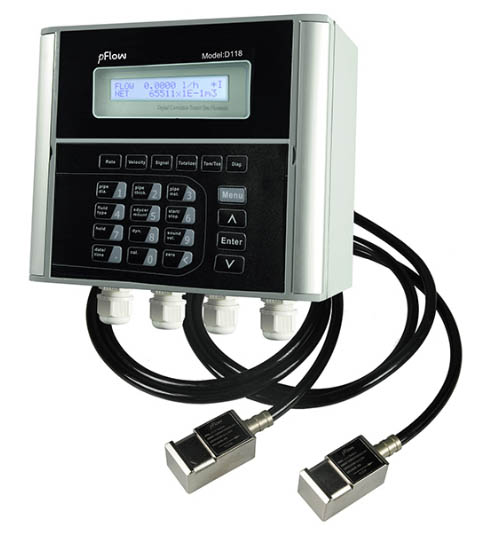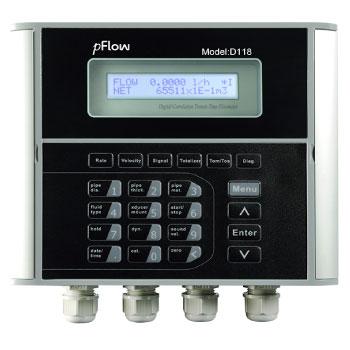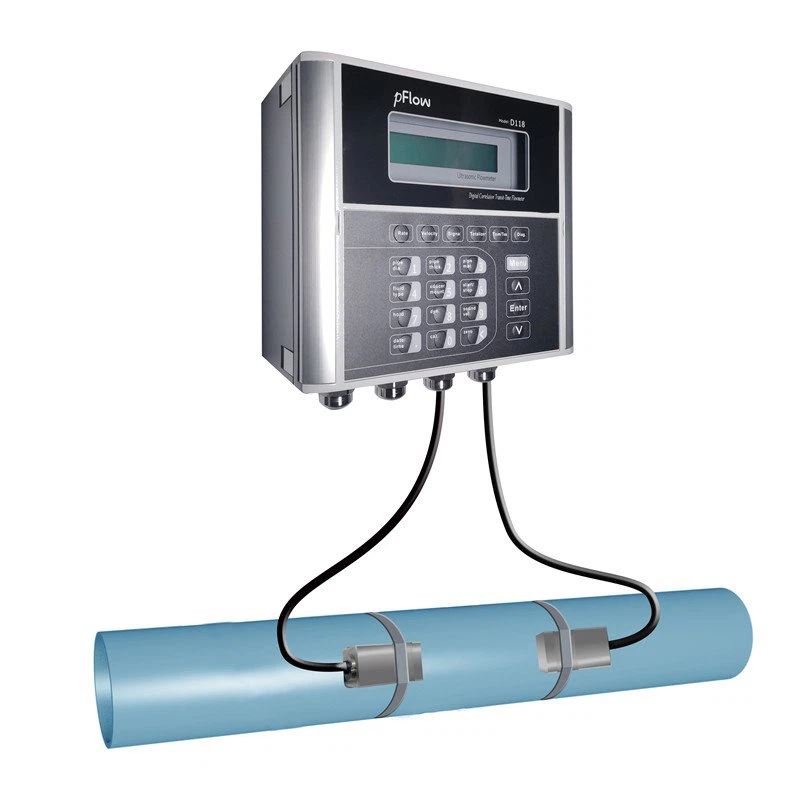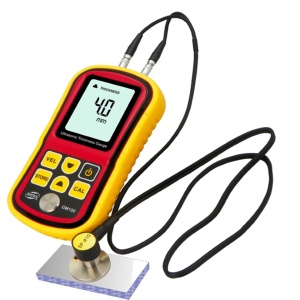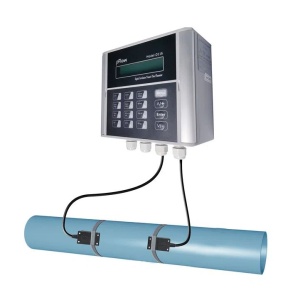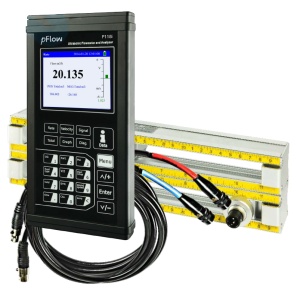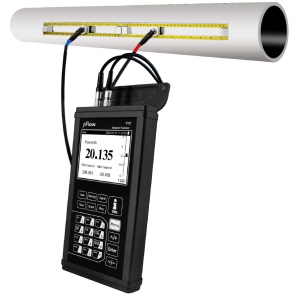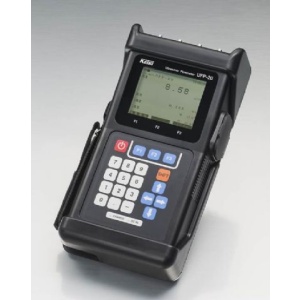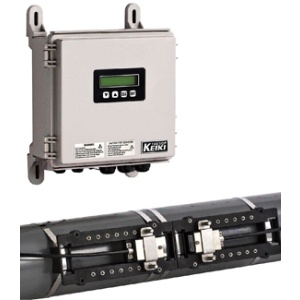D118 wall mount ultrasonic flow meter features state of the art advanced non-invasive technology meaning there is no pressure drops, no moving parts, no leaks, and no risk of contamination. It is clamped to the outside of the pipe without the need to cut into or stop the process.
The D118 utilizes TVT transit time technology, which while is primarily designed for clean liquids, this flow meter can reliably measure liquids containing small amounts of suspended solids or aeration.
This flow meter offers a compact size built into a tough IP65 die cast aluminum enclosure, so it is suitable for out door use.
The unique clamp-on design makes the installation very simple, requiring no special skills and only basic tools for mounting.
This flow meter is designed primarily for fixed permanent installations and does include onboard data logging which could be used for applications like leak detection over time, to find intermittent faults in a flow process, or flow measurement surveys. This flow meter offers high precision, reliability, and capability at an economical price point.

